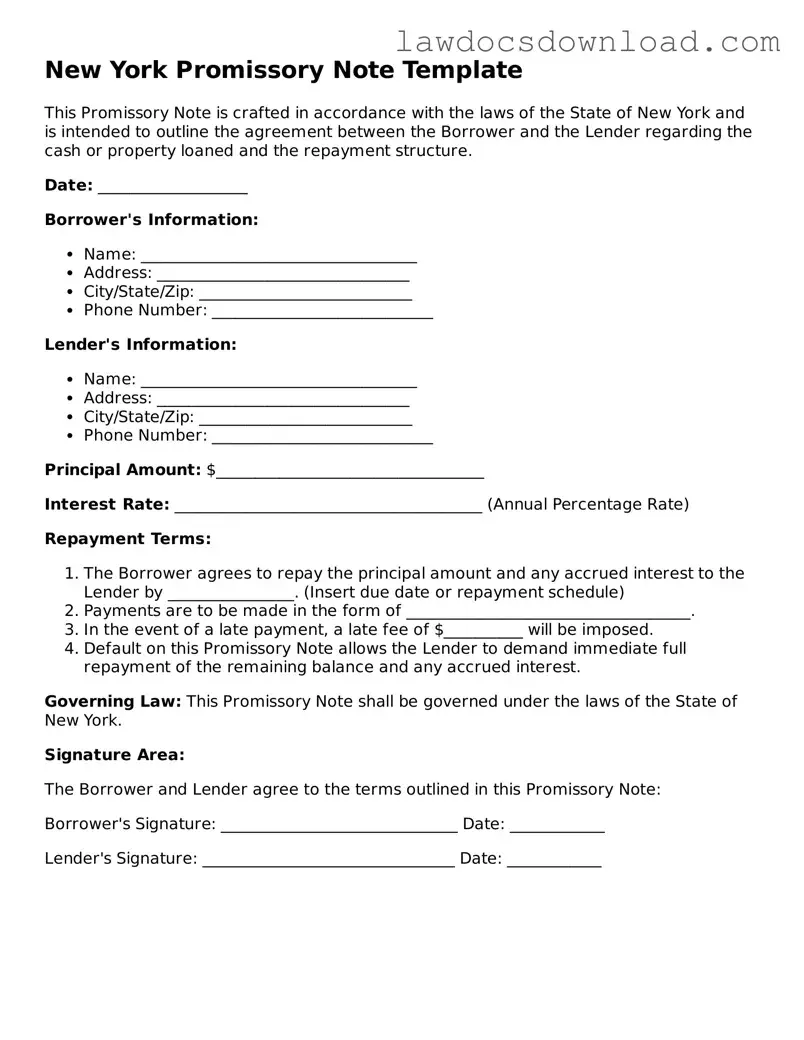The New York Promissory Note Form is closely related to a Loan Agreement, primarily because both are binding documents between a lender and a borrower concerning the borrowing of money. The distinction lies in their complexity and details; while a promissory note is a straightforward promise to pay back a sum of money under agreed terms, a loan agreement usually contains more detailed clauses regarding the obligations of both parties, collateral arrangement, and actions in the case of a default.
Similarly, an IOU (I Owe You) document echoes the simplicity of a promissory note but is even less formal. An IOU merely states the amount owed and to whom, without detailing the repayment schedule or interest rates, making it less enforceable than a promissory note. It’s an acknowledgment of debt but doesn’t bind the borrower to terms as strictly as a promissory note does.
Mortgage agreements also share similarities with promissory notes, as they both involve borrowing and lending practices. However, a mortgage specifies borrowing to finance real estate purchases, with the property itself serving as collateral for the loan. While the promissory note secures the promise to repay, the mortgage agreement contains specific details on the property involved and what happens if the borrower fails to make payments.
A Bond is another form that resembles a promissory note by representing a loan between an issuer and an investor, but it typically pertains to corporate or governmental borrowing. Bonds include terms regarding the loan's interest rate and maturity date but are designed for public investment rather than private loans between individuals.
A Line of Credit Agreement, while serving a different financial function, shares the notion of borrowing under specific conditions. Unlike the one-time loan of a promissory note, a line of credit agreement offers the borrower access to a set amount of funds to draw from as needed, detailing the terms under which this money can be borrowed and repaid over time.
A Student Loan Agreement is a specialized type of promissory note targeting educational funding. It outlines the terms under which a student borrows money for tuition and other expenses, including interest rates and repayment schedules. The focus on educational finance and the inclusion of particular deferment and forgiveness options distinguishes it from general promissory notes.
Installment Agreements, akin to promissory notes, involve the borrower agreeing to repay a sum in scheduled payments. However, they are more commonly used for transactions involving goods or services rather than loans of cash. These agreements detail the amount to be paid in each installment, any interest charged, and what happens in case of late or missed payments.
A Security Agreement complements a promissory note when a loan involves collateral. This legal document outlines the specifics of the property or asset pledged as security for the loan, ensuring the lender can take possession if the borrower defaults. While a promissory note signifies the promise to repay, the security agreement protects the lender's interest in the pledged collateral.
